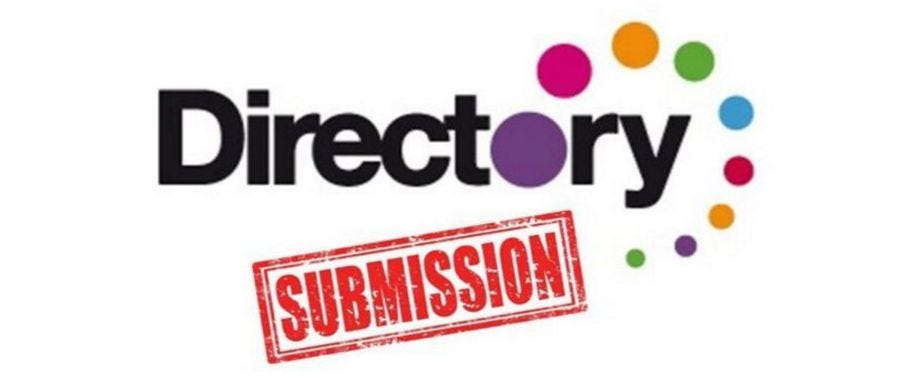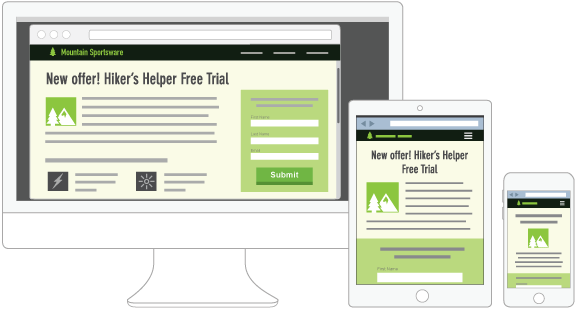With the release of Google’s recent Hummingbird algorithm update, mobile sites and strategies are in the spotlight. For businesses, having a site that renders across a wide variety of mobile devices is critical for doing business. A smart mobile strategy extends beyond design to content development as well.
Here’s a closer look at what you need to know to develop the right mobile-optimized content marketing strategy for your business.
If you’re unfamiliar with the Hummingbird update, I recommend the following article for more background: Google Hummingbird: A Mobile Content Marketing Strategy Just Became Essential. For a broad overview on mobile content strategies, see my recent Entrepreneur.com article The Key Ingredients to a Winning Mobile Content Marketing Strategy.
Embrace mobile-first as the new mindset
The paradigm shift started with design. The old approach to design for mobile was simple: create a website that worked for users on standard computers (e.g. for the “large screen”). Then get creative and find ways to scale it down for mobile devices. For sites that required more effort than simply being made smaller, designs could be simplified or made more “tappable” as an extension of the touch screen environment.
In recent months, many leading experts in the area of design have come out in opposition to this approach and suggested that good design in 2013 and 2014 is mobile-first. Half of all internet searches now take place on mobile devices, and that number is expected to rise. The implication is that the same kind of thinking needs to be applied to how we create content. Simply writing short and breaking your paragraphs into smaller chunks of text isn’t enough. Tricks for making longer content more digestible might work in the short-term, but thriving in the mobile world requires an increasingly forward-looking approach.
Acknowledge tension between long-form and short-form content
If you scan the help wanted ads for freelance bloggers, it’s easy to see the shift to long-form content. Ads that once asked for rates for 500 word articles no longer want submissions less than 1000 words. The assumption here is that longer content can go more in-depth, show more expertise and create more value for the reader.
It’s a natural outgrowth of Google algorithm updates such as Panda, which use content quality as a key metric for how sites rank. The end result should be something that’s read and shared more, ultimately making it more likely to perform well in search engine rankings.
The tension here is whether or not someone is likely to read a 1000 word treatise on your chosen subject on their smartphone. What’s worse for marketers is that the most truthful answer is “it depends.” It depends on your market, the subject, and the use context of their query. Is your 1000 word piece providing them step-by-step guidance for a problem that they need to solve right now?
Are you providing insight and entertainment so gripping that their entire bus commute slips by while they’re reading your material? Or is your subject matter best broken up into digestible bits that are more easily consumed on an as-needed basis? This leads to my next point.
Understand your audience’s mobile habits
It’s amazing how many conversations about mobile strategies and content marketing in general happen in the absence of audience data. Can you answer the following questions about your customers and prospects?
- What percentage of your audience accesses your site on mobile devices?
- Are they using tablets or smartphones?
- What activities are they doing on your site, independently and as compared with your overall traffic?
- What content are they accessing – by topic and by format?
- How much time do they spend on your site? An audience with an average of 10 minutes is different than an audience with an average of 90 seconds. It’s all about attention span.
- Do they consume visual content?
- What other sites, social media platforms, and activities are they doing on mobile?
The greater the depth in terms of your understanding of your audience’s mobile habits, the more compelling your content will be. But specifically, understanding the makeup of their mobile universe will help you create content that feels native – rather than retroactively shoehorned to fit in.
For more information on how to determine what your target audience wants, see my article, “7 Ways to Find What Your Target Audience Wants and Create Epic Content.”
Focus on your headlines
Writing the kind of headline that grabs a reader’s attention, piques their interest, and refuses to let them go until they’ve devoured your content is just good copywriting.
But when writing for mobile users, it’s doubly important that your headline is:
- Highly relevant to your audience
- Answers the question “what’s in it for me” by showcasing the benefit to the reader
- Has a powerful, timely hook
- Evokes an image or an emotional response in the reader
- Loaded with proof elements
Find opportunities to work your lead-ins
Your article’s lead in, or what’s called lede in journalism, is the first paragraph or two. This is the hook, and what carries the reader through the journey of the broader piece. But the mobile environment is likely to shift the focus on these first, few crucial paragraphs.
Article summaries are becoming ever more important. It’s possible that these “executive briefings” are all that people will read if your content is accessed via mobile. Can you offer the kind of “quick hits in three bullets or less” summary that could give your key takeaways in a few minutes of casual, mobile browsing?
The natural fear is that if you give all the secrets away early, people won’t keep reading. But I’d argue the other perspective: If you deliver tremendous value early on, readers won’t be able to help but keep going. The readers with a screen that’s too small to read 2000 words on still get the value of a positive brand contact and are likely to come back for more.
Mix up your content lengths
Strategically, long and in-depth content is vital for SEO. But from a human readership perspective, there’s a big need for hard-hitting, insightful articles that deliver a ton of value in a compressed space. This means that your tactical approach to content generation will need to vary based on the channels that you’re targeting. One strategy is to find a site architecture that features short summaries, as outlined above.
Another is to consciously vary the lengths of the content that you create. Could your site have a version of your blog that mobile readers land on, that highlights short summaries and offers the chance to click over to longer articles? Can you offer two versions of every piece – the long version and the quick hits? Can you vary content on your blog day by day, providing both in-depth tutorials and shorter pieces?
Don’t overlook the power of formatting
Reformatting existing content isn’t enough (although you should be doing this). But good mobile formatting should become an essential part of your mobile-first content strategy. You want to be at the forefront of establishing a new model of writing for the web. Mobile-friendly content development is about:
- Getting to the point, quickly and efficiently
- Thinking about a layout that integrates tappable elements that make calls to action easy to take
- Big fonts that are easy to read
- Colors that pop
- Visual elements – like visual content and videos – wherever possible
- Text layouts that are clean and streamlined when you’re dealing with written content
If you’ve got a website or branding style guide, it may be time to revisit it and revise it to reflect the minimum standards that will help mobile content thrive.
Consider the reading level
There’s an old maxim in the newspaper industry that you should write to an eighth grade level. To some, that sounds condescending. But it’s actually congruent with one of the biggest takeaways of any copywriting or direct marketing course: write the way you speak.
In other words, don’t make it harder to read your writing (or listen to your podcast or watch your video) by using it as a place to show off your vocabulary. To a certain extent, you need to know your audience. A blog post targeting plumbers and targeting Ph.Ds. in economics have different universes of potential vocabularies that seem “mundane.” Content for plumbers can refer to parts that the average reader has never heard about; economists will take certain academic concepts for granted. But both have a threshold of what’s easy to get through and acceptable in normal conversation. Remember that this is even more important when you’re dealing with mobile content.
The more general your audience, the better off you are writing to that 8th grade ideal. Get to the point. Be succinct, be clear, and be efficient with your words.
One strategy that can help you do that is to use a Fleisch-Kincaid readability score. The Fleisch-Kincaid readability score gives you a grade level associated with what you write. It’s built right into Microsoft Word’s review feature, and it’s a great way to do a gut check on what you’re writing. It looks at word length, sentence length, and overall construction. If the score is higher than you’d like, take a look and see if it’s possible to reduce the number by playing with these elements.
Introduce video and visual content
Videos, infographics, images, and other visual content is becoming increasingly important. If you’ve shied away from introducing this to your content strategy, moving in the direction of mobile-first is a great time to do so.
Taking a mobile-first approach to video requires paying close attention to the rise of micro-video. Services like Vine, with its six second limit, are pushing the envelope in terms of how brands convey their message. It’s not always practical to convey a message in six seconds, but look at video and visual content through the same lens as text: can this be shorter, tighter or more efficient with my viewer’s time? For more on video marketing, see my article “4 Advantages of Video Marketing for Business.”
Use secondary screens
When in doubt, defer secondary content to another screen. If it’s not absolutely essential to the point that you’re making on that page, consider a link instead of embedding it into your content. This is counterintuitive to a world of content creators that embed video, create pop-up image galleries, and have busy sidebars of products and services. Instead, look for opportunities to defer unnecessary (or less necessary) content and allow your visitors to choose their own adventure as it were. The more streamlined your overall site and content presentation, the better.
Conclusion
Creating a mobile content strategy for your business has many components. If you’re just embarking down that road or you’re revisiting your progress, I’d encourage you to find ways to create for mobile and then “scale up.” Not only will your workload be reduced further than doing it the other way around, but you’ll be setting up a content creation process that’s sustainable into the future.






